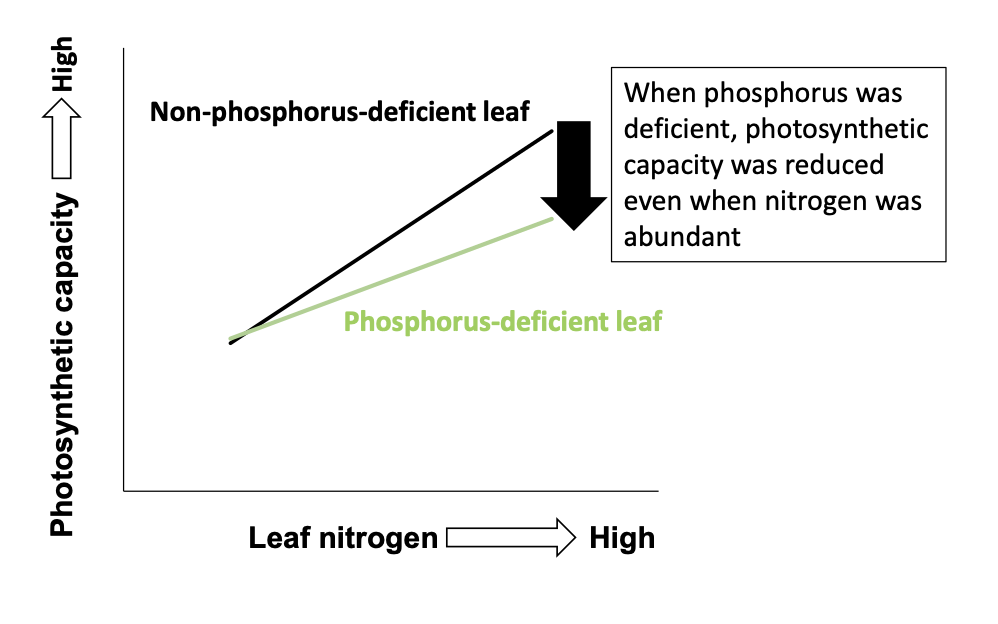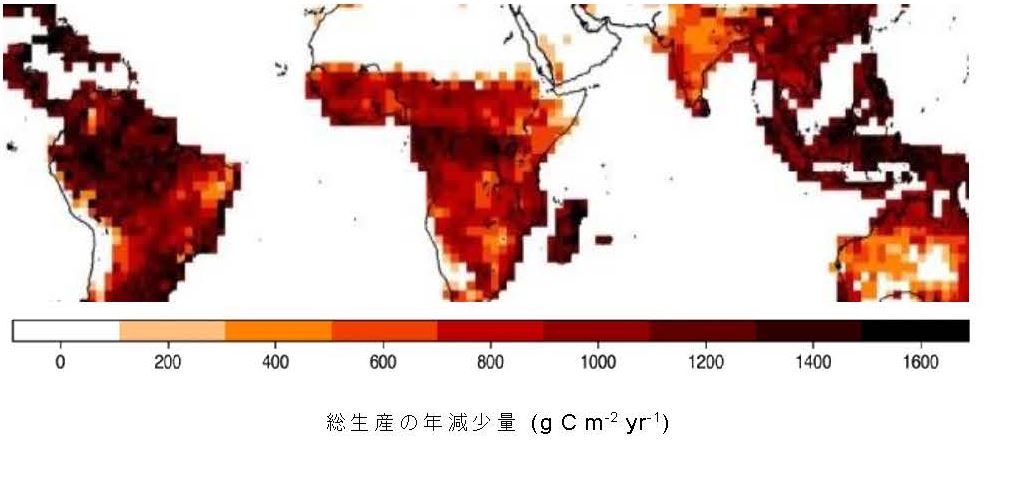研究成果
Phosphorus Limitations Reduce Total Tropical Forest Production by 36%
― Contributes to improved accuracy of terrestrial carbon balance models―
Phosphorus Limitations Reduce Total Tropical Forest Production by 36%
―Contributes to improved accuracy of terrestrial carbon balance models―
|
Main Points
|
Overview
An international research group including JIRCAS and Kochi University, and led by Professor David Ellsworth of Western Sydney University (Australia), has successfully elucidated the photosynthetic capacity of tropical forest trees under phosphorus constraints. The group has shown that incorporating the limitation of photosynthesis by phosphorus, one of the essential elements of plants, into a model predicting total forest production reduces the total production of tropical and subtropical forests worldwide by 36%, compared to a model that does not incorporate this limitation.
Tropical forests account for more than one-third of the total production of terrestrial ecosystems and play an important role in climate change mitigation and adaptation. On the other hand, tropical soils have been weathered and are phosphorus deficient, but there are few measured data on the extent to which phosphorus limits photosynthesis, and its impact on total forest production was unknown.
Therefore, an analysis of a dataset sampled from 52 sites on four continents around the world clarified the relationship between phosphorus concentration in leaves and photosynthetic capacity. The results showed that even if nitrogen was abundant, phosphorus limitation caused a reduction in photosynthetic capacity. Furthermore, by incorporating phosphorus limitation into a model for predicting total forest production, the impact of phosphorus constraints on the total production of tropical and subtropical forests worldwide has been successfully quantified.
This study also found that the impact of phosphorus on photosynthesis in the tropics is considerably greater than previously assumed, and will contribute to the improvement of the prediction accuracy of carbon balance in land areas.
The results of this study were published in the scientific journal Nature Communications on August 25, 2022 (JST).
Publication
- Authors
- DS Ellsworth, KY Crous, MG De Kauwe, LT Verryckt, D Goll, S Zaehle, KJ Bloomfield, P Ciais, LA Cernusak, TF Domingues, ME Dusenge, S Garcia, R Guerrieri, FY Ishida, IA Janssens, Kenzo Tanaka, Tomoaki Ichie, BE Medlyn, P Meir, RJ Norby, PB Reich, L Rowland, LS Santiago, Y Sun, J Uddling, AP Walker, KWLK Weerasinghe, MJ van de Weg, Yun-Bing Zhang, Jiao-Lin Zhang, IJ Wright
- Title
- Convergence in phosphorus constraints to photosynthesis in forests around the world
- Journal
- Nature Communications
DOI : https://doi.org/10.1038/s41467-022-32545-0
For Inquiries
JIRCAS President KOYAMA Osamu
- Program Director
- HAYASHI Keiichi (Environment Program)
- Principal Investigator
- TANAKA Kenzo (Forestry Division)
- Press Coordinator
- OMORI Keisuke (Head, Information and Public Relations Office)
E-mail:koho-jircas@ml.affrc.go.jp
Reference Information
Tropical forest in Malaysia (left) and forest canopy crane gondola (right)
Tropical forests in Malaysia and other countries are covered with a wide variety of giant trees over 50 meters tall (left). A gondola of a 90m-high canopy observation crane is used to access the leaves of forest canopy trees over 50 m tall to measure photosynthesis (right).





